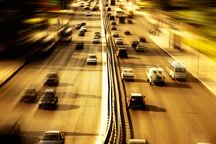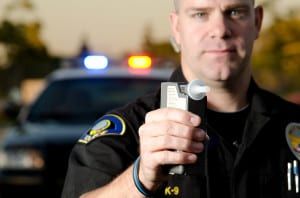 Breathalyzers have been the most technologically advanced alcohol-detecting devices for years. However, an alcohol-detecting device currently in development could further prevent drunk driving and alcohol-related crashes. Working as a supplement to breathalyzers, the powerful alcohol-detecting device could help catch drunk drivers before police officers even cross their path.
Breathalyzers have been the most technologically advanced alcohol-detecting devices for years. However, an alcohol-detecting device currently in development could further prevent drunk driving and alcohol-related crashes. Working as a supplement to breathalyzers, the powerful alcohol-detecting device could help catch drunk drivers before police officers even cross their path.
According to an article recently published by in the Journal of Applied Remote Sensing, researchers at the Military University of Technology in Poland have developed lasers that can detect the presence of alcohol vapors, like those exhaled by someone who’s been drinking, in a vehicle from a safe distance. The device detects alcohol by detecting subtle changes that occur in the laser beam as it passes through alcohol vapor.
Similar to technology that detects speeding drivers and red light runners, the laser system would be set up on the side of the road to monitor and take photos of each passing car. If the laser detects alcohol vapors in a car, a message and a photo of the car and its plate number will be sent to a police officer in a parked car down the road. Once the suspected drunk driver approaches, the police officer can stop the car and check for signs of impairment using field sobriety tests, a breathalyzer, and other conventional tests used to determine alcohol impairment.
 Researchers note that drivers could use solar screens on windows, among other methods, to deceive the successfully tested system. Foreseeing such situations, the researchers designed the laser system to also detect anything that prevents the laser from making its way into a vehicle. If such vehicles are detected, the system will pass the message along to the police officer down the road so that he or she can stop the vehicle to check for alcohol or an impaired driver.
Researchers note that drivers could use solar screens on windows, among other methods, to deceive the successfully tested system. Foreseeing such situations, the researchers designed the laser system to also detect anything that prevents the laser from making its way into a vehicle. If such vehicles are detected, the system will pass the message along to the police officer down the road so that he or she can stop the vehicle to check for alcohol or an impaired driver.
While the alcohol-detecting laser device won’t eliminate drunk driving, it could potentially deter people from driving while impaired and prevent alcohol-related crashes by acting as a tool to help police officers better enforce drunk driving laws. The alcohol-detecting system would also reduce the number of cars police officers need to pull over, something that would come in especially handy at sobriety checkpoints.
In the next stages of the laser system’s development, researchers will test out what happens when a car’s air conditioning or fans are running and perhaps even create a compact, user-friendly laser device.
